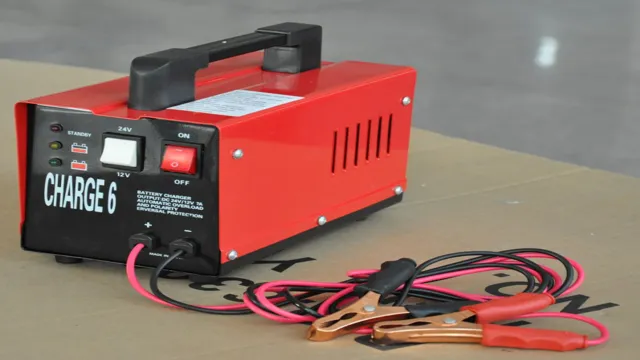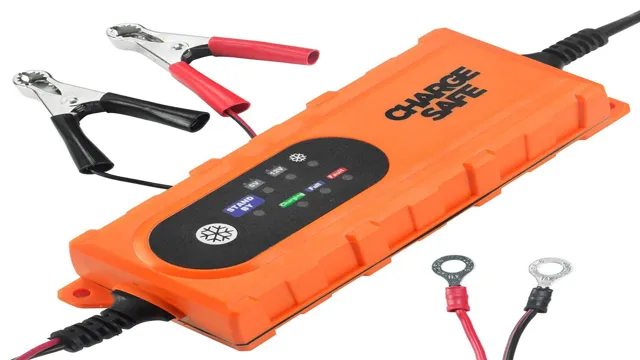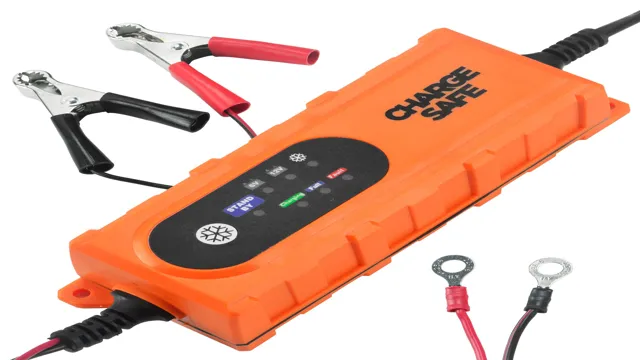How to Use a Dewalt Car Battery Charger for Optimal Efficiency
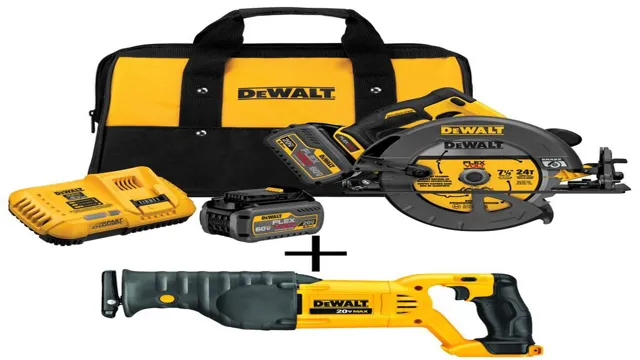
Charging a car battery is one of those tasks that most of us don’t think about until our car won’t start. And when that happens, having a reliable battery charger like the Dewalt Car Battery Charger can make all the difference. But if you’re new to using a battery charger, it can seem a bit daunting.
Don’t worry though, in this blog, we’ll take you through everything you need to know about how to use a Dewalt Car Battery Charger in a simple and understandable way. Once you’ve finished reading, you’ll be able to confidently charge your car battery whenever you need to, without any fuss or stress. So let’s get started!
Safety Precautions
If you need to charge your car battery, a DEWALT car battery charger can be a very useful tool. However, you must take certain safety precautions to avoid accidents. One of the first things to do is to read the user manual from cover to cover because each model has specific instructions to follow.
Also, ensure that the charger is compatible with your car battery. It’s important to wear protective gear such as gloves, goggles, and rubber-soled shoes, as well as working in a well-ventilated room to avoid inhaling dangerous fumes from battery acid. Make sure the charger is unplugged before connecting the terminals and ensure that they are correctly aligned.
Another essential precaution is to never touch the clamps while the charger is in use and never connect the positive and negative terminals together. Finally, never leave the charger unattended, and always turn off the charger and disconnect it when you’ve finished charging your battery. By following these safety measures, you can use a DEWALT car battery charger with confidence and avoid any potential hazards.
1. Read the manual before use
When it comes to using any electronics or appliances, it’s always important to take precautions for your own safety. One of the simplest and most effective methods of doing so is by reading the manual before use. The manual will provide you with a wealth of information on both the operation of the device as well as its safety features.
Many accidents and incidents occur due to improper use or handling of a product, which can easily be avoided by taking the time to familiarize yourself with the product’s features and capabilities. Moreover, it will help to ensure the longevity of the device, which in turn saves you money on costly repairs or replacements. So, always make sure to read the manual before using any new electronics or appliances, and don’t hesitate to clarify any doubts or concerns you may have.
In the end, it’s always better to be safe than sorry.
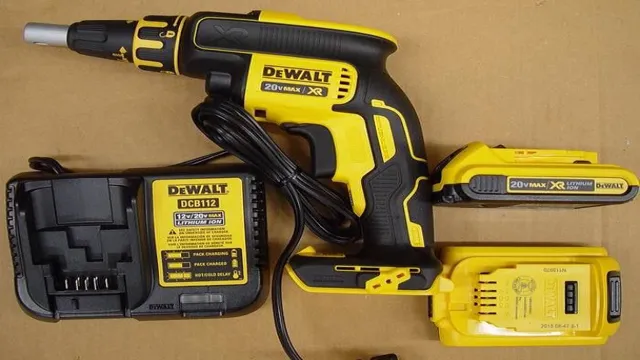
2. Ensure charger is kept dry and away from heat sources
To ensure the safety of your charger, it’s crucial to keep it dry and away from heat sources. Water and electricity don’t mix well, and exposing your charger to moisture can lead to electrical hazards. If you accidentally spill water on your charger or it gets wet, do not use it until it’s completely dry.
Additionally, keeping your charger away from heat sources such as heaters or direct sunlight can prevent it from overheating and potentially causing a fire. Remember to unplug your charger when not in use and keep it in a cool, dry place to maximize its lifespan and prevent any safety concerns. By following these safety precautions, you can ensure the longevity and safety of your charger.
3. Keep out of reach of children
When it comes to using household items and products, it’s important to prioritize safety precautions, especially if you have children in the house. One of the most crucial safety measures to take is keeping items out of reach of children. This can include anything from cleaning solutions to sharp tools and small objects that pose a choking hazard.
It’s important to keep these items locked away in cabinets or drawers that are inaccessible to little hands. Additionally, be sure to read and follow all instructions and warning labels on products before using them. Remember, accidents can happen in the blink of an eye, and it’s better to be safe than sorry.
By taking these simple safety measures, you can help protect your children from harm and give yourself peace of mind.
4. Do not attempt to charge damaged batteries
When it comes to handling damaged batteries, there are a few safety precautions that you should be aware of to prevent any accidents or injuries. One of the most important things to remember is to never attempt to charge a damaged battery. This is because a damaged battery can be unstable and may explode, causing serious harm.
Instead, you should dispose of the battery safely and replace it with a new one. It’s also important to remember to store batteries in a cool, dry place and keep them away from heat sources or direct sunlight. Additionally, always follow the manufacturer’s instructions when handling batteries of any kind, and avoid using any damaged or expired batteries.
By following these safety precautions, you can reduce the risk of accidents and keep yourself and those around you safe.
Using the charger
Learning how to use a Dewalt car battery charger is a fairly simple process that can save you a lot of time and hassle. The first step is to ensure that the charger is compatible with your battery. Then, connect the charger to your car battery following the manufacturer’s instructions.
Some chargers may require you to adjust amperage settings, but most will have an automatic charging mode. Once you’ve connected the charger to your battery, plug it in and turn it on. The charger will do the rest of the work, monitoring the battery’s charge level and automatically turning off when it is fully charged.
It’s important to never leave a charging battery unattended, as this can result in overcharging and damage to both the battery and charger. With a little practice, you’ll be able to use your Dewalt car battery charger with confidence and ease.
1. Make sure the charger is unplugged before connecting the battery
When it comes to using a charger for your battery, one of the most important things to keep in mind is safety. Before you even think about connecting the battery to the charger, make sure the charger itself is unplugged. This step is crucial in ensuring that you don’t accidentally cause any harm to yourself or the electrical equipment you’re using.
Once you’ve double-checked that the charger isn’t connected to any power source, you can then safely plug it in and attach the battery. By following this simple but essential step, you can minimize the risk of any potential accidents or damage. So the next time you need to charge your battery, be sure to keep this tip in mind, and always prioritize safety first.
With this approach, you can feel confident knowing that you’re taking the necessary precautions to keep yourself and others safe.
2. Connect the red clamp to the positive terminal and the black clamp to the negative terminal
When it comes to jump-starting a car, using a charger can be an effective and safe solution. To use a charger, you first need to connect the red clamp to the positive terminal of the dead car battery and the black clamp to the negative terminal. Always make sure to double-check the polarity before connecting the clamps, as reversing the polarities can cause damage to the battery or even create a dangerous spark.
Once the clamps are securely in place, turn on the charger and follow the manufacturer’s instructions. This will usually involve selecting the appropriate charging mode, which may include a boost or trickle charge. While charging, it’s important to monitor the battery’s voltage and disconnect the charger once it’s fully charged.
By following these steps, you can safely and effectively use a charger to jump-start a dead car battery.
3. Plug the charger in and select the appropriate charging mode for your battery
When it comes to using a battery charger, there are a few things you need to keep in mind. Firstly, you’ll want to make sure that the battery is disconnected before you start using the charger. Once you’ve checked that, it’s time to plug in the charger and select the appropriate charging mode for your battery.
This is important because different batteries have different charging requirements, and you don’t want to end up damaging your battery by using the wrong charging mode. Most chargers will have different settings you can choose from, so make sure you select the one that matches your battery’s specifications. It’s also a good idea to keep an eye on the charging process and make sure everything is working as it should be.
Remember that charging times can vary depending on the size of your battery and the charger you’re using, so it’s important to be patient and not rush the process. By following these simple steps, you’ll be able to safely and effectively charge your battery, ensuring that it stays in good condition and lasts as long as possible.
4. Wait for the charging cycle to complete, indicated by the charger’s LED lights
When it comes to charging your electronic devices, it’s essential to use the correct charger and follow the proper steps for a successful and safe charge. One important step is waiting for the charging cycle to complete, which is indicated by the charger’s LED lights. This ensures that your device has been fully charged and is ready to use.
It’s important not to unplug the charger before the cycle is complete, as this can cause damage to your device’s battery life. This step may take some patience, but it’s worth it to give your device the optimal charging it needs. So, the next time you’re charging your device, remember to use the right charger and be patient to wait for the charging cycle to complete, indicated by the LED lights.
It’s an essential step in giving your device the power it needs to keep up with your daily activities.
Troubleshooting
If you’re looking for a reliable car battery charger, the DeWalt DCB115 is a great option. To use it, first make sure your battery is compatible with the charger. Next, connect the charger to a power source and insert the battery.
The charger will automatically detect the voltage of the battery and begin charging. The LED lights on the charger will indicate the charging status, with each light representing 25% progress. If you encounter any issues, such as the battery not charging or the charger not turning on, double-check the connections and ensure the battery is not damaged.
It’s also important to note that while the DeWalt DCB115 is a powerful charger, it can only charge one battery at a time. Overall, the DeWalt DCB115 is a reliable and easy-to-use car battery charger that can get you back on the road in no time.
1. If the LED lights do not turn on, check that the charger is properly plugged in and the connections to the battery are secure
LED lights If you’re having trouble with your LED lights turning on, it may be due to something as simple as an unplugged charger or loose connections. Before you start worrying about more complicated issues, double-check that everything is properly connected and secure. Make sure the charger is plugged in tightly and that the battery connections are clean and snug.
It’s also a good idea to check the battery charge level and make sure it’s not completely drained. Sometimes, a lack of power can prevent the LED lights from turning on. If none of these solutions work, it may be worth taking a closer look at the wiring and other components to see if there’s a more serious issue at play.
But in many cases, ensuring proper connections and power supply can help you get your LED lights back up and running in no time.
2. If the battery does not hold a charge, it may be faulty and require replacement
When it comes to troubleshooting a device that won’t turn on or doesn’t hold a charge, it’s essential to address the battery first. An old, faulty, or damaged battery can quickly cause problems, since it’s the powerhouse of the device. If your device doesn’t hold a charge or turns off unexpectedly, it’s likely that the battery is the issue.
Before rushing to replace it, make sure your device is not running too many apps or that the brightness settings aren’t set too high. However, if it still fails to hold a charge, then you might need a battery replacement. Note that replacing a battery yourself can help save costs, but it can be tricky, so it’s essential to follow instructions correctly.
If in doubt, it’s best to take your device to an authorized repair center to get a professional opinion. A new battery can quickly breathe new life into a device and dramatically improve its performance. So, always consider the battery as the primary cause of device malfunction, and fix it accordingly to get back to using your device.
Conclusion
In conclusion, using a Dewalt car battery charger is as easy as flipping on a light switch. Simply plug it in, connect it to your car battery, and let it work its magic. It’s like having a personal battery doctor that knows exactly what your car needs to get up and running again.
And if you’re feeling adventurous, you can even use it to charge other devices like your phone or laptop. So, don’t be afraid to give your car the tender loving care it deserves with the help of a trusty Dewalt car battery charger. Happy charging!”
Proper use of a Dewalt car battery charger involves following safety precautions, connecting the battery correctly, and selecting the appropriate charging mode. Troubleshoot any issues that may arise and seek professional help if needed.
When using a Dewalt car battery charger, it’s important to remember that troubleshooting may be necessary if any issues arise. One common issue that many people may experience is the battery not charging fully, or not holding a charge after being charged. In this situation, it’s best to check the connections to make sure they’re clean and secure.
Sometimes, dirt or debris can build up on the battery or charger connections, causing a poor connection. Additionally, if the battery has been deeply discharged, it may take longer to charge than normal. It’s also important to make sure you’re using the appropriate charging mode for your particular battery type.
If you’re unsure of what mode to use, consult your user manual or a professional for assistance. In any case, never attempt to force a battery to charge or use a damaged charger, as this can be dangerous. Remember, safety should always be a top priority when using a Dewalt car battery charger.
FAQs
What type of battery can be charged with a Dewalt car battery charger?
Dewalt car battery chargers are designed to charge 12-volt lead-acid batteries, including wet, gel, and AGM batteries.
How do I connect the Dewalt car battery charger to my car battery?
Connect the red clip to the positive terminal of the car battery and the black clip to the negative terminal. Make sure the charger is unplugged before connecting the clips.
What is the charging time for a Dewalt car battery charger?
The charging time varies depending on the battery’s capacity and level of charge. Generally, it takes 4-6 hours to charge a fully discharged car battery with a Dewalt car battery charger.
Can I use the Dewalt car battery charger for other types of batteries?
Dewalt car battery chargers are designed for 12-volt lead-acid batteries and should not be used for other types of batteries like lithium-ion or nickel-cadmium.
How do I know when the battery is fully charged?
The charger’s indicator light will turn green when the battery is fully charged.
Can I leave the Dewalt car battery charger connected to the battery overnight?
Yes, the charger has an automatic shut-off feature that prevents overcharging. However, it’s recommended to disconnect the charger once the battery is fully charged.
What is the warranty for Dewalt car battery chargers?
Dewalt car battery chargers come with a 3-year limited warranty from the date of purchase.
